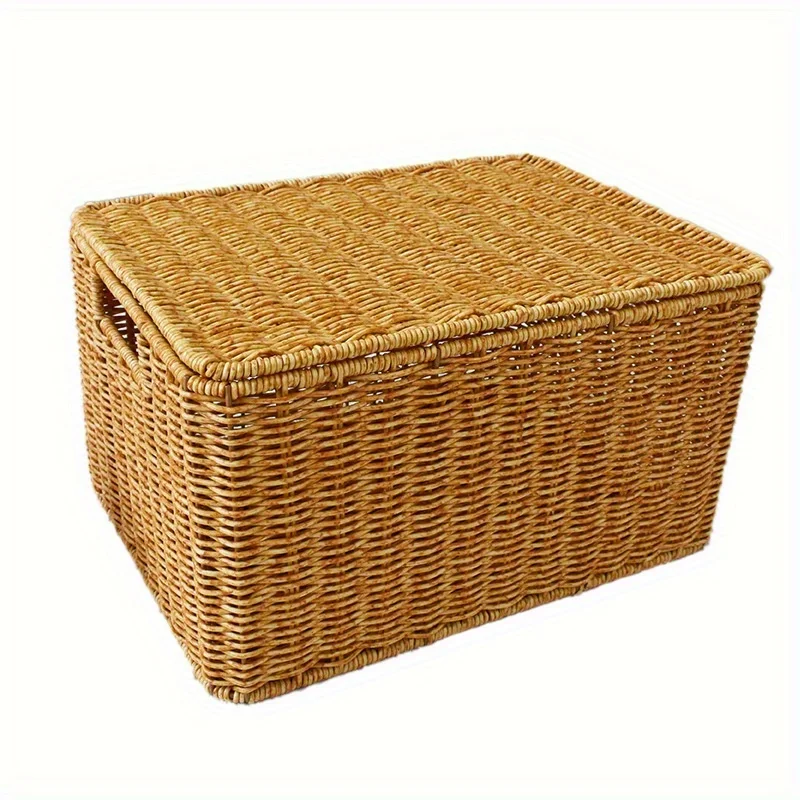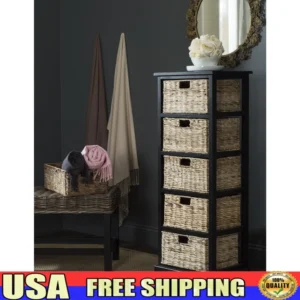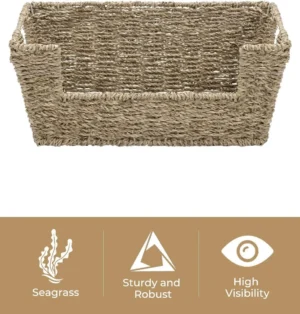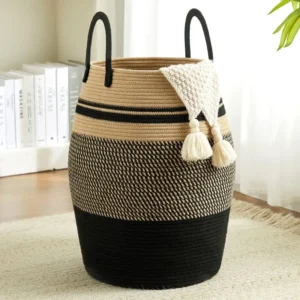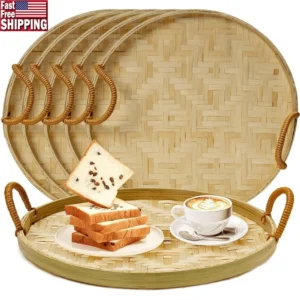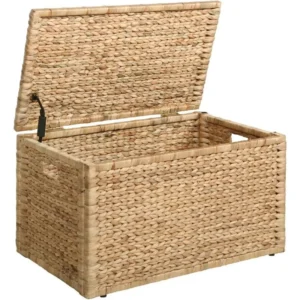Why Proper Basket Storage Matters
Baskets are more than just containers—they’re investments in both function and style for your home. Proper storage ensures these versatile items maintain their shape, integrity, and appearance when not actively being used. Without appropriate storage, baskets can face several challenges:
- Dust accumulation that becomes difficult to remove
- Pest infestation in natural fibers
- Shape deformation from improper weight distribution
- Material deterioration from moisture exposure
- Color fading from prolonged sun exposure
Most households struggle with storage space—the average American home contains over 300,000 items, with storage solutions being a constant challenge. Implementing effective organizing techniques for laundry wicker baskets and other basket types helps reclaim valuable living space while extending the life of these useful items.
Beyond practical considerations, proper basket storage also has environmental benefits. When baskets remain in good condition longer, replacement frequency decreases, reducing waste and conserving resources. Natural material baskets like wicker and rattan are particularly susceptible to damage if stored incorrectly, making proper storage techniques essential for these eco-friendly options.
As basket collections grow, finding smart storage solutions becomes increasingly important to maintain both your home’s organization and the quality of your basket investment.
Preparing Baskets for Storage: Essential First Steps
Before storing any type of basket, proper preparation is crucial to ensure it remains in excellent condition. These essential steps will protect your baskets from damage and extend their useful life.
Cleaning Different Basket Materials
Different basket materials require specific cleaning approaches to prepare them for storage:
Wicker and Natural Fiber Baskets
* Remove dust using a soft brush attachment on your vacuum cleaner
* Wipe with a slightly damp cloth (not wet) to remove surface dirt
* For stubborn grime, use a soft toothbrush with mild soap solution
* Allow to completely air dry before storage (typically 24-48 hours)
Understanding how to properly clean wicker baskets is essential before storing them for extended periods. Natural cleaning solutions like equal parts white vinegar and water work well for most natural fiber baskets without causing damage.
Fabric Baskets
* Check care labels for specific washing instructions
* Machine-washable fabric baskets should be washed in cold water on gentle cycle
* Hand-wash delicate fabric baskets in lukewarm water with mild detergent
* Reshape while damp and air dry completely
* Never store fabric baskets while damp as this promotes mildew growth
Plastic and Metal Baskets
* Clean with warm soapy water and rinse thoroughly
* Disinfect if needed with a solution of 1 part bleach to 10 parts water
* Dry completely to prevent water spots or corrosion
Beyond cleaning, inspect each basket for damage that needs repair before storage. Look for loose weaving, broken handles, or structural issues. Making minor repairs now prevents further deterioration during storage. For baskets with decorative elements, ensure ribbons, beads, or other embellishments are secure and properly cleaned.
Baskets with lids require special attention—wicker baskets with lids should be cleaned both inside and out, with particular care given to hinges or connection points. After cleaning, ensure baskets are completely empty, checking hidden corners for forgotten items that could attract pests or cause damage.
Space-Saving Storage Solutions for All Basket Types
Creating an effective basket storage system requires balancing accessibility, protection, and space efficiency. The right approach depends on several factors:
- How frequently you’ll need to access the baskets
- Available storage space in your home
- Basket materials, sizes, and values
- Climate conditions in potential storage areas
- Aesthetic considerations if baskets will be visible
Many homeowners find success with a seasonal rotation system, keeping currently used baskets accessible while storing off-season baskets more compactly. This approach works particularly well for wicker laundry basket storage where seasonal needs may change throughout the year.
When developing your storage plan, consider your home’s unique layout. Odd spaces like under stairs, above cabinets, or in unused corners can become perfect basket storage locations with the right organization system. Categorizing baskets by use (decorative, functional, seasonal) helps determine which storage method works best for each group.
Stacking and Nesting Methods
Stacking and nesting represent the most space-efficient storage methods for most basket collections:
Size-Based Nesting
* Arrange baskets from largest to smallest
* Place smaller baskets inside larger ones
* Use acid-free tissue paper between nested baskets to prevent scratches
* Avoid forcing baskets together—each should fit comfortably inside the next
Protective Stacking
* Stack similar-sized baskets with protective materials between each layer
* Use cotton cloths, acid-free tissue, or clean pillowcases as separators
* Keep heaviest baskets at the bottom of the stack
* Limit stack height to 3-4 baskets to prevent crushing lower items
* Rotate stacked baskets every few months if stored long-term
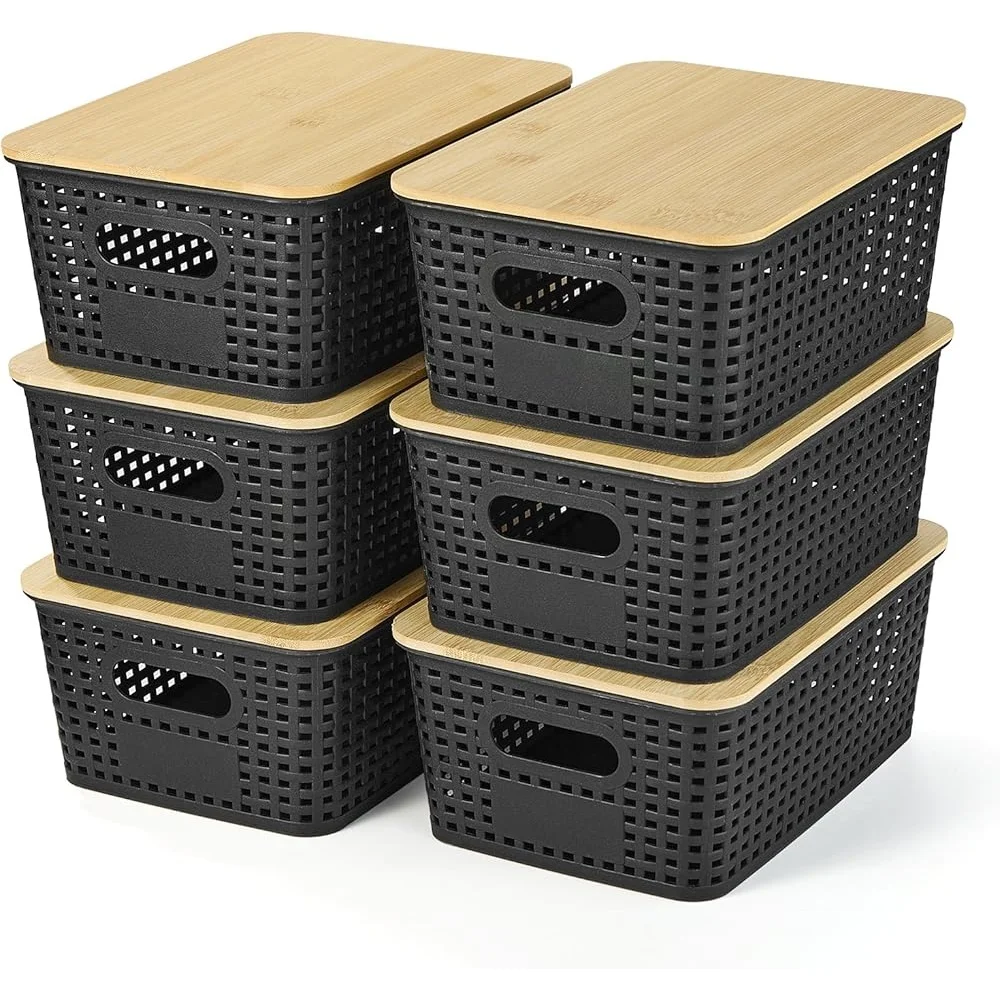
Basket shape plays a crucial role in stable stacking. Round baskets stack best with same-shaped items, while rectangular or square wicker storage baskets typically offer more stable stacking options. Watch for warning signs of too much weight, such as creaking sounds or visible compression of lower baskets.
For valuable or delicate baskets, consider storing them individually rather than in stacks, even if this requires more space. The protection from potential damage justifies the extra room needed.
Utilizing Existing Storage Spaces
Most homes have untapped storage potential in existing spaces:
Under-Bed Storage
* Perfect for flat or collapsible baskets
* Use under-bed storage containers to keep dust away
* Slide baskets into pillowcases before placing under beds
* Typical under-bed clearance (6-8 inches) accommodates multiple flat baskets
Cabinet and Closet Optimization
* Use upper shelves for seasonal or rarely used baskets
* Add shelf dividers to prevent baskets from toppling
* Utilize door space with over-door hooks or organizers
* Store small baskets in larger ones to maximize vertical space
Dual-Purpose Furniture
* Store baskets in ottomans, storage benches, or coffee tables with storage
* Use decorative baskets as permanent storage features in entertainment centers
* Consider furniture with built-in basket storage systems
Woven storage baskets can be particularly versatile when stored in less obvious spaces like the gap between refrigerators and cabinets or the space above kitchen cabinets. For baskets stored in garages, attics, or basements, consider climate conditions—extreme temperature fluctuations and high humidity can damage natural fiber baskets over time.
Vertical Storage: Wall and Hanging Solutions
When floor and shelf space is limited, look up! Vertical storage options maximize available space:
Wall-Mounted Solutions
* Install pegboards with hooks for hanging small to medium baskets
* Use decorative wall brackets designed for basket display
* Mount floating shelves specifically for basket storage
* Consider grid wall systems that allow adjustable basket arrangements
Over-Door Options
* Over-door hooks with staggered heights accommodate multiple baskets
* Specialized over-door organizers with basket-sized pockets
* Remove doors from unused cabinets to create basket display nooks
Ceiling Storage Considerations
* Suspended shelving in garages or storage rooms for rarely used baskets
* Hanging pot rack systems repurposed for basket storage
* Pull-down attic storage systems for seasonal basket collections
When implementing hanging storage, always verify weight limits—most decorative wall hooks support 5-10 pounds, while properly installed utility hooks can handle 25-50 pounds. The right vertical system can transform basket storage from a challenge into an attractive design feature.
Storage Solutions for Specific Basket Types
Different basket styles require tailored storage approaches for best results:
Large Basket Storage
Large baskets present unique storage challenges but also opportunities:
- Repurpose large baskets as storage containers for smaller ones
- Utilize corner spaces where large baskets fit naturally
- Store seasonal items inside large baskets to maximize utility
- Consider rolling storage platforms for heavy baskets that need frequent access
- Use large, flat baskets as “trays” to stack smaller items on top
Large wicker baskets with structural support can often hold significant weight without damage, making them perfect vessels for storing smaller baskets or lightweight seasonal items. When stacking items inside large baskets, use soft materials as dividers to prevent scratches.
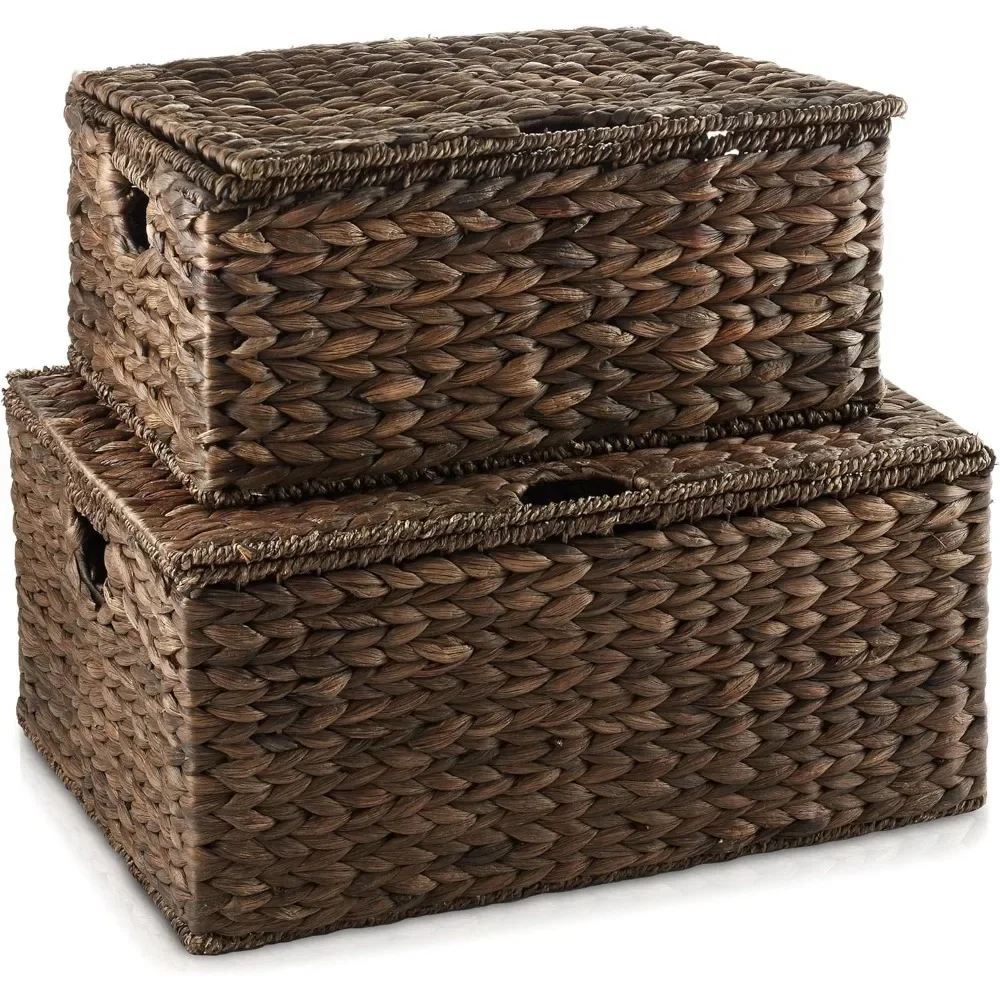
For oversized baskets too large for conventional storage, consider whether they can serve as permanent decorative elements. A large basket in a corner can become a blanket holder, plant stand, or focal point rather than something that needs storage.
Small and Decorative Basket Storage
Small and decorative baskets require protection from dust and damage:
- Group similar small baskets together in clear storage bins
- Use shadow boxes or glass-front cabinets for collector’s items
- Create rotating display systems for seasonal decorative baskets
- Protect delicate details with acid-free tissue paper wrapping
- Store valuable small baskets individually in breathable cotton bags
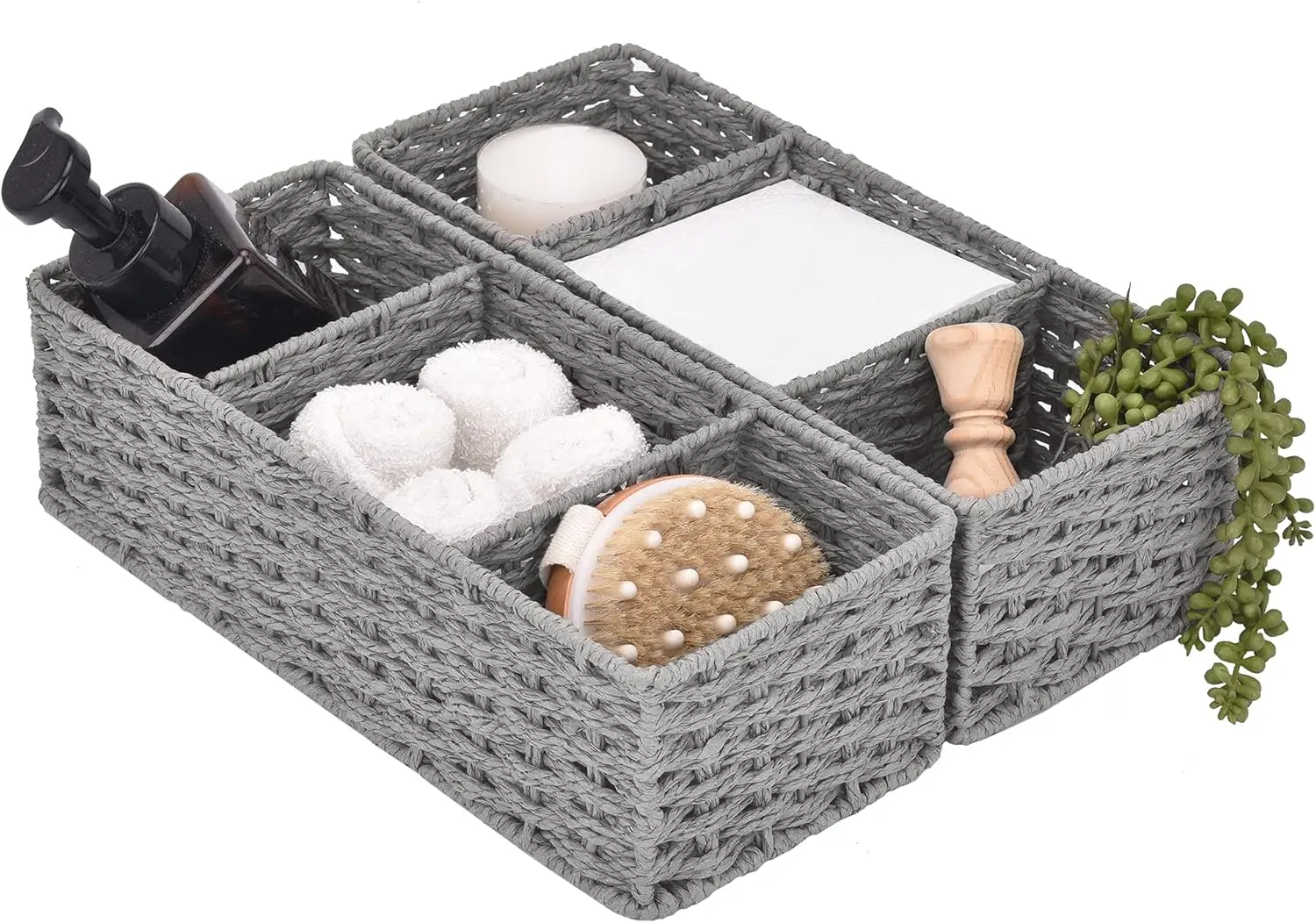
For collectors, maintaining visibility while providing protection is key. Consider photograph labels on storage containers so you can quickly find specific baskets without unpacking everything. Creating seasonal rotation schedules ensures your favorite decorative pieces get displayed throughout the year while safely storing the rest.
Black Wicker Baskets, Rattan Storage Baskets, Tall Wicker Baskets, Wicker Shelf Baskets, Woven Storage Baskets
5-Tier Distressed Black Wood Frame Storage Tower with Removable Wicker Baskets for Home Organization$715.80 Select options This product has multiple variants. The options may be chosen on the product pageWicker Laundry Baskets, Woven Laundry Baskets, Woven Storage Baskets
$392.02 Select options This product has multiple variants. The options may be chosen on the product pageWicker Baskets with Handles, Wicker Storage Baskets, Woven Storage Baskets
$137.92 Select options This product has multiple variants. The options may be chosen on the product pageLarge Wicker Laundry Baskets, Tall Wicker Baskets, Woven Laundry Hampers, Woven Storage Baskets
$130.54 Select options This product has multiple variants. The options may be chosen on the product pageRound Wicker Baskets, Wicker Baskets with Handles, Woven Storage Baskets
$177.30 Select options This product has multiple variants. The options may be chosen on the product pageWicker Storage Trunks, Woven Storage Baskets
$438.26 Select options This product has multiple variants. The options may be chosen on the product page
Long-Term Storage Solutions
For baskets being stored for months or longer, additional precautions help maintain their condition:
Climate Control Considerations
* Ideal storage conditions: 65-75°F with 40-50% humidity
* Avoid attics, garages, or basements with temperature extremes
* Use dehumidifiers in damp storage areas
* Keep natural fiber baskets away from direct sunlight
Protective Coverings
* Use breathable cotton sheets or pillowcases rather than plastic
* For valuable baskets, consider acid-free archival boxes
* Muslin bags provide excellent protection while allowing air circulation
* Avoid sealed plastic containers which can trap moisture
Pest Prevention
* Include cedar blocks or lavender sachets as natural pest deterrents
* Regularly inspect stored baskets for signs of insects
* Avoid mothballs which can damage basket materials and leave lingering odors
* Keep food residue completely cleaned from baskets before storage
Baskets with handles require special attention during long-term storage. Wicker baskets with handles should be stored with nothing hanging from or putting pressure on the handles, as this can cause warping or breakage over time. Implement a regular inspection schedule—checking stored baskets every 3-4 months helps catch potential issues before serious damage occurs.
Creative Multi-Purpose Storage Ideas
Why store baskets away when they can continue serving a purpose? Consider these creative approaches:
- “Store within store” concept: Use decorative baskets as visible storage for seasonal items
- Create rotating displays where baskets serve as both decor and storage
- Install wall-mounted basket systems that function as artistic room dividers
- Establish a “basket library” where items are showcased but organized by size and type
- Use baskets as planters during growing seasons, then clean and store during winter
Many homeowners find success with laundry organization systems using wicker baskets that transition between functions throughout the week. A basket might hold clean laundry one day, serve as a shopping tote the next, then become decorative storage over the weekend.
Designer approaches often embrace basket visibility rather than hiding them away. For instance, mounting various basket types on a wall in an artful arrangement serves both storage and aesthetic purposes, eliminating the need to find hidden storage space.
Specialized Storage Scenarios
Some situations require unique basket storage approaches:
Small Apartments and Limited Spaces
* Utilize door space with specialized hanging organizers
* Investigate furniture with hidden basket storage compartments
* Consider under-bed rolling platforms for easy access
* Look for unused wall space for vertical basket storage
* Use vacuum-seal bags for soft fabric baskets to reduce volume
Collector Considerations
* Implement museum-style storage with individual compartments
* Use archival materials for rare or valuable baskets
* Create detailed inventory systems with photographs
* Control light exposure for colored or delicate materials
* Consider glass-front display cases that protect while showcasing
Moving with Basket Collections
* Nest where possible, but avoid forcing baskets together
* Wrap each basket individually in packing paper or bubble wrap
* Fill baskets with soft items like linens to maintain shape
* Label clearly to ensure proper handling during transit
* Transport in rigid containers to prevent crushing
For those restoring heirloom pieces, understanding how to restore old woven baskets becomes an important part of the storage process, as proper preservation begins with appropriate storage techniques.
Troubleshooting Common Basket Storage Problems
Even with careful planning, storage issues can arise. Here’s how to address them:
Problem: Mold or Mildew
* Take affected baskets outdoors and brush away visible mold
* Clean with a solution of equal parts white vinegar and water
* Dry thoroughly in sunlight if possible
* Apply a light coating of diluted tea tree oil to prevent recurrence
* Store in a drier location with better air circulation
Problem: Misshapen Baskets
* Lightly dampen with a spray bottle of water
* Reshape by hand while slightly damp
* Allow to dry completely in the desired shape
* Use weights or forms to maintain shape while drying
* Store properly afterward to prevent recurrence
Problem: Pest Infestation
* Isolate affected baskets immediately
* For minor issues, freeze the basket for 48 hours to kill insects
* Clean thoroughly with appropriate solutions for the material
* Add natural deterrents before returning to storage
* Inspect all nearby stored items for signs of spreading
Problem: Color Fading
* Store colorful baskets away from sunlight
* Use UV-protective covers if near windows
* Rotate displayed baskets regularly to ensure even exposure
* Consider fabric dyes specifically formulated for basket materials
* Store colored baskets separate from white or natural ones
Prevention remains the best approach—regular inspection and maintenance of your basket storage system helps catch issues before they become serious problems.
Frequently Asked Questions About Basket Storage
How do I prevent wicker baskets from becoming misshapen in storage?
Maintain the basket’s shape by filling it with acid-free tissue paper or clean cotton fabric before storing. For long-term storage, rotate the basket’s position every few months to prevent permanent deformation from constant pressure in one area.
What’s the best way to store antique or valuable baskets?
Store valuable baskets individually, preferably in acid-free boxes or cotton bags. Keep them in climate-controlled spaces away from direct sunlight, extreme temperatures, and humidity fluctuations. Handle with clean hands and consider cotton gloves for very valuable pieces.
How can I safely store baskets in humid environments?
In humid areas, use dehumidifiers or moisture absorbers near stored baskets. Select storage locations with good air circulation, avoid basement floors or exterior walls, and use breathable covers rather than plastic. Regularly air out stored baskets and inspect for early signs of mold.
What’s the best approach for managing a large basket collection with limited space?
Implement a rotation system, keeping only seasonally appropriate baskets accessible. Use vertical storage systems to maximize wall space. Consider multi-functional storage where baskets remain visible and useful rather than hidden away. Regularly evaluate your collection and donate items you no longer use.
How should I store outdoor baskets during off-seasons?
Clean thoroughly to remove dirt and debris, ensure complete drying, and store in a climate-controlled environment when possible. If stored in garages or sheds, elevate off the floor and cover with breathable materials. Apply protective oil to natural fiber outdoor baskets before storage.
For laundry room organization, our best wicker baskets for laundry organization provide solutions that not only work well when in use but also store efficiently when not needed.
By implementing these storage solutions from Tidy Treasure, your basket collection will remain in excellent condition while maximizing your available space. Remember that the right storage approach not only preserves your baskets but can transform them from clutter into curated collections that enhance your home’s organization and beauty.

